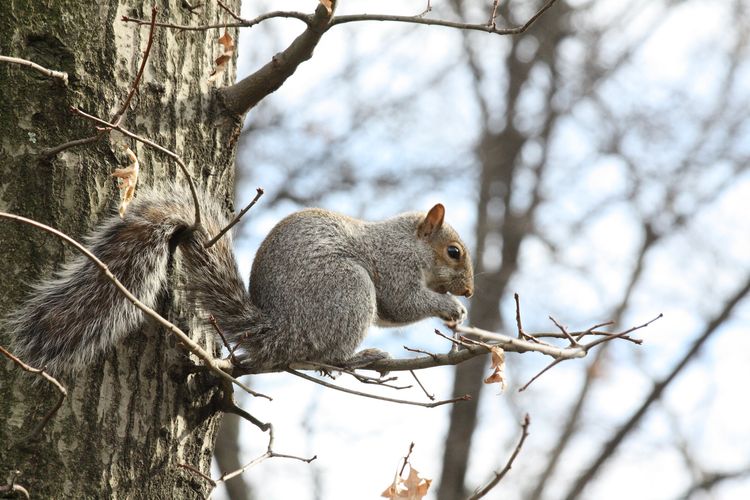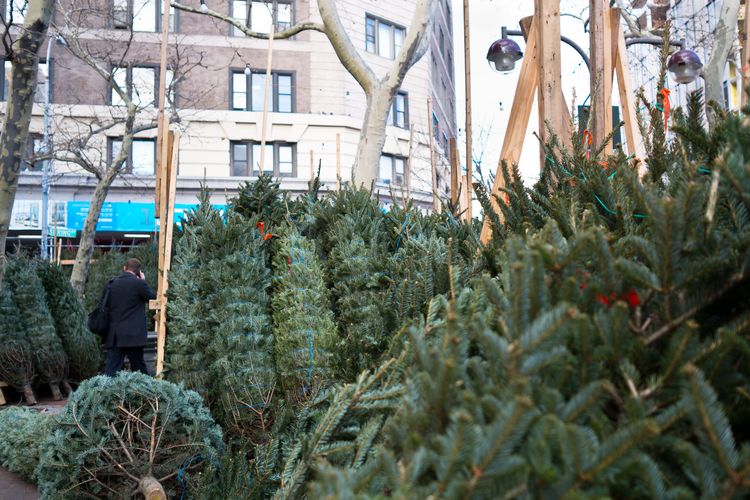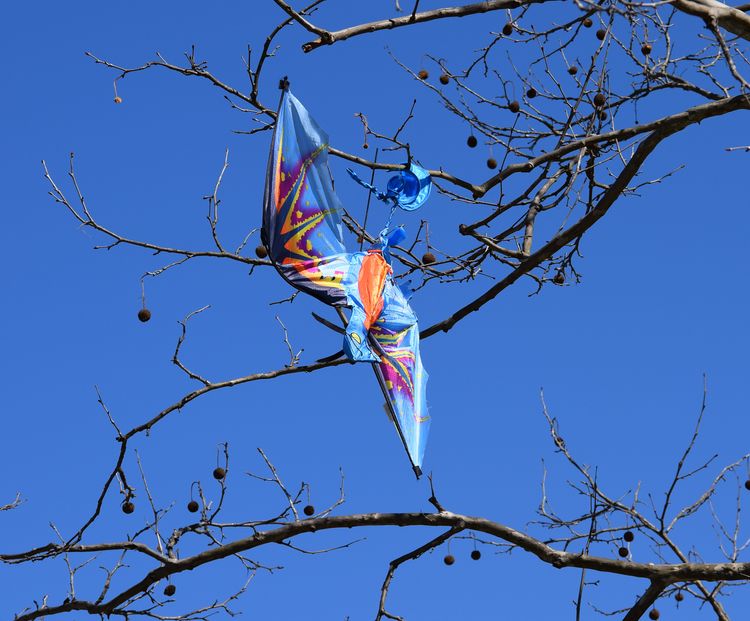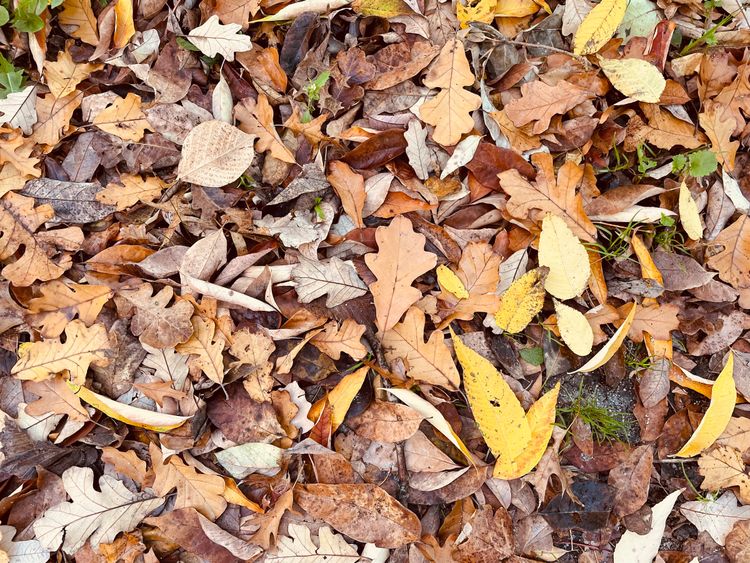Persimmon Trees Foresee Our Winter’s Future
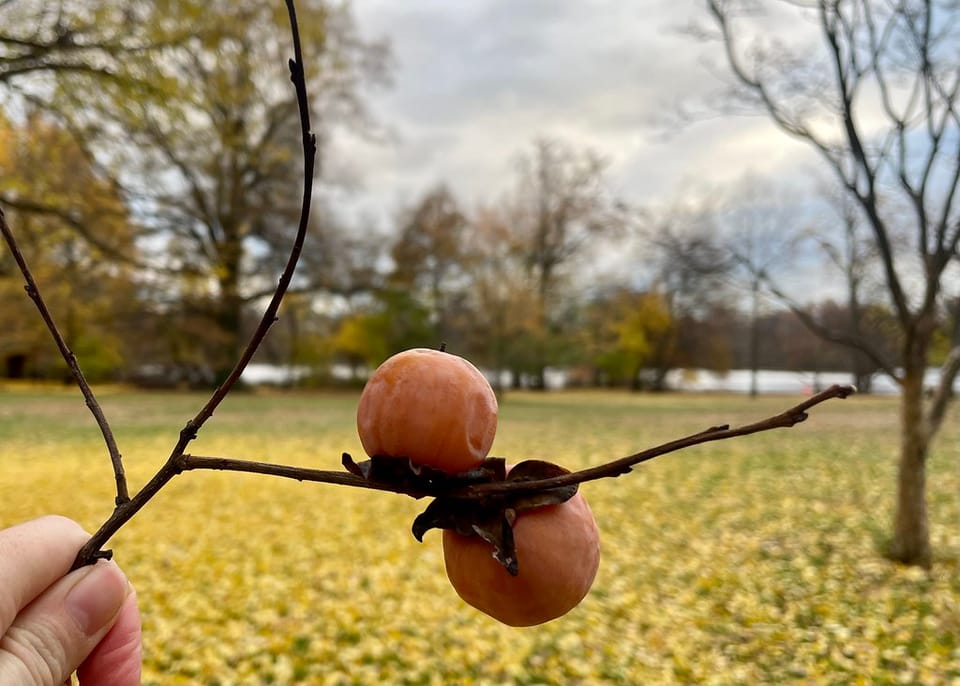
Radiators in city apartments have rattled themselves awake, and coats have been exhumed from closets, but real winter is still on the way. Will the coldest season bring mild days, sheets of ice, or colossal heaps of snow? You could look to a source like the National Oceanic and Atmospheric Administration with its scientific models and predictions, or you could ask the trees.
Among the most popular folkloric winter forecast techniques is to open a persimmon seed. Our local prognosticating species is Diospyros virginiana, better known as the American or common persimmon. As the official site of the New York Natural Heritage Program notes, “The scientific name Diospyros can be translated to ‘Jupiter’s grain,’ and what God wouldn’t want to eat this delicious fruit?” Indeed, its jammy orange-yellow interior is delectable when ripe, although much like the larger and more widely cultivated Japanese persimmon, it’s extremely astringent when not, so foragers beware.
But for this forecast, you are not interested in the fruit, but in the seed within. We are in luck in New York City, as it and Long Island are the most common places with native persimmon populations in the state, just at the edge of their northeastern distribution. A rare grove grows at High Rock Park Preserve on Staten Island, and some trees are clustered around the Peninsula in Brooklyn’s Prospect Park, all easy to identify by their bark with a texture reminiscent of alligator skin.
With a seed procured, get some pliers and carefully crack it open to reveal the white cotyledon, the persimmon’s embryonic leaf. If it resembles a fork, a mild winter is ahead; a spoon foretells enough snow to shovel; and a knife is an ominous prediction of cutting, icy cold.
Three seeds opened this week from a persimmon tree in Prospect Park revealed three forks, as seen below. Will this arboreal information hold true? Does the persimmon hold the power of foresight in its seeds that await spring to unfurl in the warming earth? Take a walk and feel the shifts in the weather and the increasing crispness of the air, and observe the dwindling autumnal leaves still hanging on. Whatever winter is on the wind will soon be here with cold rain, bright days, or drifts of snow. Take a moment to enjoy the last of fall as the daylight recedes and the trees thin until even the persimmon branches are bare of fruit.
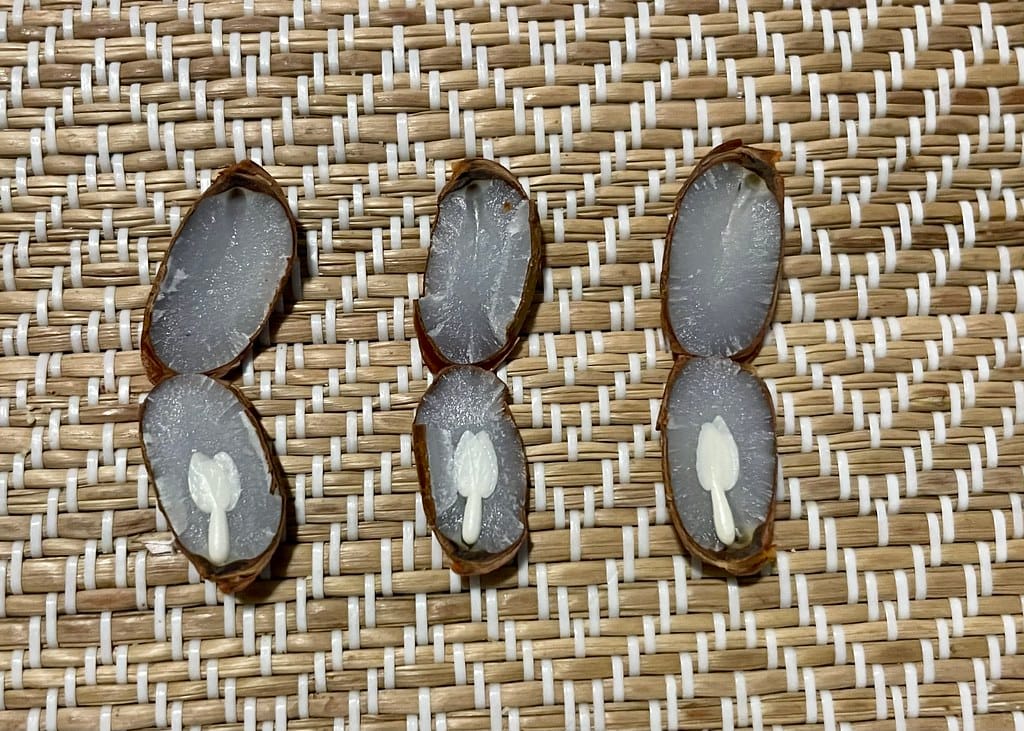
- In Washington Heights at the Morris-Jumel Mansion, you can visit George Washington’s office and war room and marvel at its bold persimmon-colored historically appropriate painted trim, which the house’s official account noted “was an available color and was 15 times more expensive than other colors due to the use of cinnabar.”
- Another popular predictor of winter in local nature is the woolly bear caterpillar, officially the larva of the Isabella tiger moth. The size of its rusty, light brown stripes in relation to its black bands has long-standing lore about winter, with narrow bands for snowy days ahead and wide bands heralding a mild season. This belief was popularized by Charles Howard Curran, an influential dipterist—a fly specialist—who worked in the entomology department at the American Museum of Natural History from 1928 to 1960. As Time magazine reported on November 8, 1948, in the year prior, Curran had taken “a look at the woolly bear caterpillars and noted that they all had narrow bands. Sure enough, along came last winter’s big snow and ice storms. Curran decided to take another look at woolly bears.” So in 1948, he and “a pack of entomologists” set off into the Hudson River hills to measure the caterpillar stripes. According to the New York State Parks & Historic Sites blog, however, after studying the woolly bears for eight years, Curran never conclusively linked their patterns to winter.
- A further sign of winter’s arrival is the change in flower beds and planters to the ornamental cabbage. As one of the few ornamental plants that can hold up to the conditions of winter, it supplants the chrysanthemums and poinsettias for the chilliest months. Can you eat them, you might wonder, gazing at their ruffles of luscious purple and green? Although they are part of the Brassica oleracea species, which also includes cauliflower, broccoli, and other cabbages, they tend to be more bitter. Leave the dream of a sidewalk salad snack on its stalk.
